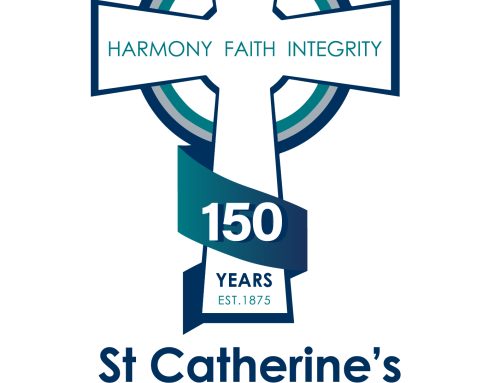St KAteri Tekakwitha – 14 July
The blood of martyrs is the seed of saints. Nine years after the Jesuits Isaac Jogues and Jean de Lelande were tomahawked by Iroquois warriors, a baby girl was born near the place of their martyrdom, Auriesville, New York.
Her mother was a Christian Algonquin, taken captive by the Iroquois and given as wife to the chief of the Mohawk clan, the boldest and fiercest of the Five Nations. When she was four, Tekakwitha lost her parents and little brother in a smallpox epidemic that left her disfigured and half blind. She was adopted by an uncle, who succeeded her father as chief. He hated the coming of the Blackrobes—Jesuit missionaries—but could do nothing to them because a peace treaty with the French required their presence in villages with Christian captives. She was moved by the words of three Blackrobes who lodged with her uncle, but fear of him kept her from seeking instruction. Tekakwitha refused to marry a Mohawk brave, and at 19 finally got the courage to take the step of converting. She was baptized with the name Kateri–Catherine–on Easter Sunday.
Now she would be treated as a slave. Because she would not work on Sunday, Kateri received no food that day. Her life in grace grew rapidly. She told a missionary that she often meditated on the great dignity of being baptized. She was powerfully moved by God’s love for human beings and saw the dignity of each of her people.
She was always in danger, for her conversion and holy life created great opposition. On the advice of a priest, Kateri stole away one night and began a 200-mile walking journey to a Christian Indian village at Sault St. Louis, near Montreal.
For three years she grew in holiness under the direction of a priest and an older Iroquois woman, giving herself totally to God in long hours of prayer, in charity, and in strenuous penance. At 23, Kateri took a vow of virginity, an unprecedented act for an Indian woman whose future depended on being married. She found a place in the woods where she could pray an hour a day—and was accused of meeting a man there!
Her dedication to virginity was instinctive: Kateri did not know about religious life for women until she visited Montreal. Inspired by this, she and two friends wanted to start a community, but the local priest dissuaded her. She humbly accepted an “ordinary” life. She practiced extremely severe fasting as penance for the conversion of her nation. Kateri Tekakwitha died the afternoon before Holy Thursday. Witnesses said that her emaciated face changed color and became like that of a healthy child. The lines of suffering, even the pockmarks, disappeared and the touch of a smile came upon her lips. She was beatified in 1980 and canonized in 2012.
Patron Saint of Indigenous Americans.
St Camillus de Lellis – 14 July
Humanly speaking, Camillus was not a likely candidate for sainthood. His mother died when he was a child, his father neglected him, and he grew up with an excessive love for gambling. At 17, he was afflicted with a disease of his leg that remained with him for life. In Rome he entered the San Giacomo Hospital for Incurables as both patient and servant, but was dismissed for quarrelsomeness after nine months. He served in the Venetian army for three years.
Then in the winter of 1574, when he was 24, Camillus gambled away everything he had—savings, weapons, literally down to his shirt. He accepted work at the Capuchin friary at Manfredonia, and was one day so moved by a sermon of the superior that he began a conversion that changed his life. He entered the Capuchin novitiate, but was dismissed because of the apparently incurable sore on his leg. After another stint of service at San Giacomo, he came back to the Capuchins, only to be dismissed again, for the same reason.
Again, back at San Giacomo, his dedication was rewarded by his being made superintendent. Camillus devoted the rest of his life to the care of the sick. Along with Saint John of God he has been named patron of hospitals, nurses, and the sick. With the advice of his friend Saint Philip Neri, he studied for the priesthood and was ordained at the age of 34. Contrary to the advice of his friend, Camillus left San Giacomo and founded a congregation of his own. As superior, he devoted much of his own time to the care of the sick.
Charity was his first concern, but the physical aspects of the hospital also received his diligent attention. Camillus insisted on cleanliness and the technical competence of those who served the sick. The members of his community bound themselves to serve prisoners and persons infected by the plague as well as those dying in private homes. Some of his men were with troops fighting in Hungary and Croatia in 1595, forming the first recorded military field ambulance. In Naples, he and his men went onto the galleys that had plague and were not allowed to land. He discovered that there were people being buried alive, and ordered his brothers to continue the prayers for the dying 15 minutes after apparent death.
Camillus himself suffered the disease of his leg through his life. In his last illness, he left his own bed to see if other patients in the hospital needed help.
Patron Saint of Hospitals, Nurses, Healthcare workers, Sick
St Bonaventure – 15 July
Perhaps not a household name for most people, Saint Bonaventure, nevertheless, played an important role in both the medieval Church and the history of the Franciscan Order. A senior faculty member at the University of Paris, Saint Bonaventure certainly captured the hearts of his students through his academic skills and insights. But more importantly, he captured their hearts through his Franciscan love for Jesus and the Church. Like his model, Saint Francis, Jesus was the center of everything—his teaching, his administration, his writing, and his life. So much so, that he was given the title “Seraphic Doctor.”
Born in Bagnoregio in 1221, Saint Bonaventure was baptized John, but received the name Bonaventure when he became a Franciscan at the age of 22. Little is known about his childhood, but we do know that his parents were Giovanni di Fidanza and Maria Ritell. It seems that his father was a physician and a man of means. While Saint Francis died about five years after the saint’s birth, he is credited with healing Bonaventure as a boy of a serious illness.
Saint Bonaventure’s teaching career came to a halt when the Friars elected him to serve as their General Minister. His 17 years of service were not easy as the Order was embroiled in conflicts over the interpretation of poverty. Some friars even ended up in heresy saying that Saint Francis and his community were inaugurating the era of the Holy Spirit which was to replace Jesus, the Church, and Scripture. But because he was a man of prayer and a good administrator, Saint Bonaventure managed to structure the Order through effective legislation. But more importantly, he offered the Friars an organized spirituality based on the vision and insights of Saint Francis. Always a Franciscan at heart and a mystical writer, Bonaventure managed to unite the pastoral, practical aspects of life with the doctrines of the Church. Thus, there is a noticeable warmth to his teachings and writings that make him very appealing.
Shortly before he ended his service as General Minister, Pope Gregory X created him a Cardinal and appointed him bishop of Albano. But a little over a year later, while participating in the Second Council of Lyon, Saint Bonaventure died suddenly on July 15, 1274. There is a theory that he was poisoned.
Saint Bonaventure left behind a structured and renewed Franciscan Order and a body of work all of which glorifies his major love—Jesus.
Our Lady of Mt Carmel – 16 July
Hermits lived on Mount Carmel near the Fountain of Elijah in northern Israel in the 12th century. They had a chapel dedicated to Our Lady. By the 13th century they became known as “Brothers of Our Lady of Mount Carmel.” They soon celebrated a special Mass and Office in honor of Mary. In 1726, it became a celebration of the universal Church under the title of Our Lady of Mount Carmel. For centuries the Carmelites have seen themselves as specially related to Mary. Their great saints and theologians have promoted devotion to her and often championed the mystery of her Immaculate Conception.
Saint Teresa of Avila called Carmel “the Order of the Virgin.” Saint John of the Cross credited Mary with saving him from drowning as a child, leading him to Carmel, and helping him escape from prison. Saint Thérèse of the Child Jesus believed that Mary cured her from illness. On her First Communion day, Thérèse dedicated her life to Mary. During the last days of her life she frequently spoke of Mary.
There is a tradition—which may not be historical—that Mary appeared to Saint Simon Stock, a leader of the Carmelites, and gave him a scapular, telling him to promote devotion to it. The scapular is a modified version of Mary’s own garment. It symbolizes her special protection and calls the wearers to consecrate themselves to her in a special way. The scapular reminds us of the gospel call to prayer and penance—a call that Mary models in a splendid way.
Patron Saint of Chile
St Apollinaris – 20 July
According to tradition, Saint Peter sent Apollinaris to Ravenna, Italy, as its first bishop. His preaching of the Good News was so successful that the pagans there beat him and drove him from the city. He returned, however, and was exiled a second time. After preaching in the area surrounding Ravenna, he entered the city again. After being cruelly tortured, he was put on a ship heading to Greece. Pagans there caused him to be expelled to Italy, where he went to Ravenna for a fourth time. He died from wounds received during a savage beating at Classis, a suburb of Ravenna. A beautiful basilica honoring him was built there in the sixth century.




